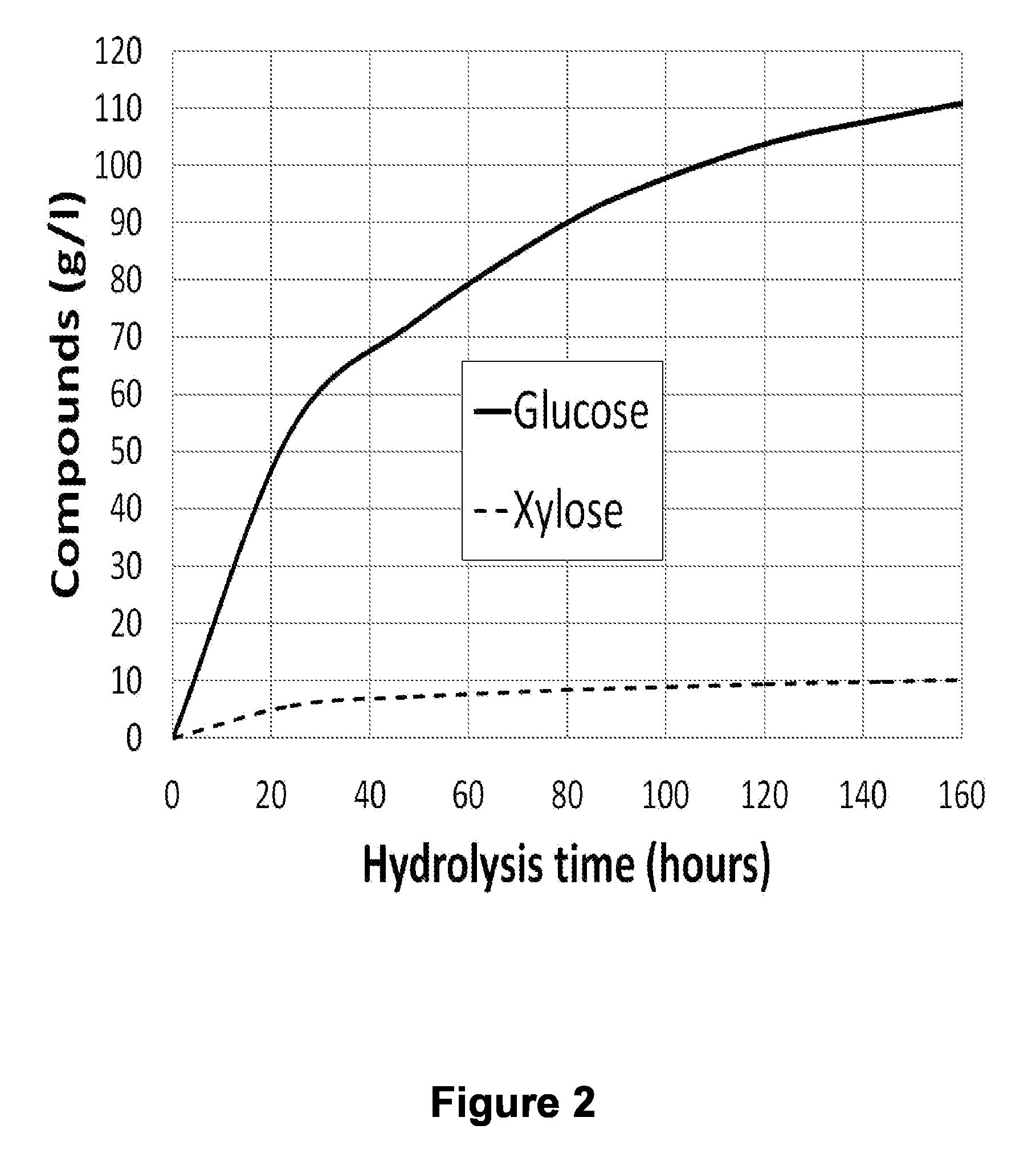Continuous process for the production of ethanol from lignocellulosic biomass
a technology of lignocellulosic biomass and continuous process, which is applied in the direction of biofuels, fermentation, etc., can solve the problems of limited availability of such feedstocks, limited use of potential food or feed plants to produce fuel, and failure to ferment xylose (derived from hemicellulose) and glucose (derived from cellulose) at the same time, so as to achieve low glucose loss and maximize the yield of fermentable sugars
- Summary
- Abstract
- Description
- Claims
- Application Information
AI Technical Summary
Benefits of technology
Problems solved by technology
Method used
Image
Examples
example
[0080]The references in this description refer to FIG. 1. The lignocellulosic feedstock, in this example corncobs chopped to a size of 0.5 to 1 cm, was moistened with acidified water in a rotary mixer to achieve 70% moisture content. This process is not limited to corn cobs. It can be adapted for other feedstocks by carefully adjusting (i) pretreatment temperature, pressure, time, pH value and (ii) load of acid catalyst.
[0081]To acidify the water, a quantity of sulfuric acid amounting to 0.8% w / w of the corncobs feed on a dry matter basis was added (Step 2). The acid catalyst can alternatively be added during Step 1 (biomass moisture adjustment, option 2a); or right before Step 3 (biomass pre-treatment, option 2b) or in both steps. The acidified, moistened cobs were conveyed to a batch steam gun in which the corncobs were pre-steamed (Step 1) for 30 minutes at atmospheric pressure. The final moisture content of the corncobs remained 70%. The batch steam gun was then sealed. The pre-...
PUM
| Property | Measurement | Unit |
|---|---|---|
| pressure | aaaaa | aaaaa |
| temperature | aaaaa | aaaaa |
| temperature | aaaaa | aaaaa |
Abstract
Description
Claims
Application Information
 Login to View More
Login to View More - R&D
- Intellectual Property
- Life Sciences
- Materials
- Tech Scout
- Unparalleled Data Quality
- Higher Quality Content
- 60% Fewer Hallucinations
Browse by: Latest US Patents, China's latest patents, Technical Efficacy Thesaurus, Application Domain, Technology Topic, Popular Technical Reports.
© 2025 PatSnap. All rights reserved.Legal|Privacy policy|Modern Slavery Act Transparency Statement|Sitemap|About US| Contact US: help@patsnap.com



